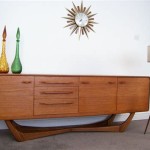Living Room Furniture Floor Plans: Optimizing Space and Functionality
The living room serves as a central hub within a home, functioning as a space for relaxation, entertainment, and social interaction. Consequently, the effective arrangement of furniture within the living room is crucial for both its aesthetic appeal and its overall functionality. Living room furniture floor plans provide a blueprint for achieving this optimal arrangement, taking into account the size and shape of the room, the placement of architectural features like windows and doors, and the lifestyle needs of the inhabitants.
The creation of a successful living room furniture floor plan involves a systematic approach that considers various factors. Initially, an understanding of the room's dimensions is paramount. This includes measuring the length and width of the room, as well as noting the position and size of windows, doors, fireplaces, and any other built-in features. These measurements serve as the foundation for creating a scaled representation of the room, either on paper or using digital design software. Subsequently, consideration must be given to the intended use of the living room. Will it be primarily used for watching television, entertaining guests, or quiet reading? The answer to these questions will influence the types of furniture selected and their arrangement within the space.
Beyond the basic dimensions and intended use, the flow of traffic within the living room is a critical consideration. A well-designed floor plan should facilitate easy movement throughout the space, avoiding obstructions and creating clear pathways between different areas. Prior to physically moving the furniture, testing the proposed arrangement with temporary markers, such as painter's tape or cardboard cutouts, can help visualize the layout and identify potential issues. This process allows for adjustments to be made before committing to a specific arrangement.
Key Point 1: Assessing Room Dimensions and Architectural Features
The initial step in developing a living room furniture floor plan involves a comprehensive assessment of the room itself. Accurate measurements are essential. This includes not only the length and width of the room but also the height of the ceiling and the dimensions of any alcoves or recesses. These measurements provide a framework for understanding the available space and its limitations. Furthermore, the location and size of architectural features significantly impact furniture placement. Windows, for instance, not only provide natural light but also influence the placement of seating to maximize views and minimize glare. Doors, both entryways and those leading to other rooms, establish traffic patterns that must be considered. Fireplaces, often focal points, dictate the arrangement of furniture around them, typically with seating oriented towards the hearth.
Beyond the primary architectural features, other elements such as built-in bookshelves, radiators, and electrical outlets should also be taken into account. Built-in bookshelves may limit the placement of larger furniture pieces, while radiators can obstruct furniture placement due to heat concerns. Electrical outlets are crucial for powering lamps, televisions, and other electronic devices, and their location should be considered when planning furniture arrangements to minimize the need for extension cords. Creating a detailed architectural plan, either on paper or using digital software, serves as the foundation for the entire furniture planning process.
The orientation of the room in relation to sunlight is another important factor. Rooms that receive direct sunlight can benefit from furniture arrangements that diffuse the light, while rooms with limited natural light may require strategic placement of lamps and mirrors to enhance brightness. The overall goal is to create a living room that is both functional and aesthetically pleasing, taking into account the unique characteristics of the space itself.
Key Point 2: Determining the Functionality and Focal Points
The intended use of the living room dictates the type and arrangement of furniture that will be most suitable. A living room primarily used for watching television will require a different layout than one used primarily for entertaining guests or engaging in conversation. In a television-centric living room, the placement of seating should be optimized for viewing comfort, with considerations given to distance from the screen and viewing angles. A comfortable sofa and armchairs, along with a coffee table for refreshments, are essential elements. The television itself can be mounted on the wall or placed on a media console, which can also provide storage for media equipment.
In contrast, a living room designed for entertaining guests should prioritize seating arrangements that promote conversation. A circular or semi-circular arrangement of sofas and armchairs encourages interaction, while a coffee table or ottoman placed in the center provides a convenient surface for drinks and snacks. A fireplace, if present, can serve as a natural focal point around which to arrange seating. The inclusion of side tables and lamps provides additional surfaces for drinks and reading material, while also adding ambient lighting.
Regardless of the primary function, every living room benefits from having a designated focal point. This could be a fireplace, a large window with a scenic view, a piece of artwork, or even a well-designed entertainment center. The furniture arrangement should be oriented around the focal point, drawing the eye and creating a sense of visual balance. The focal point helps to define the purpose of the room and creates a sense of cohesion. It also provides a starting point for determining the placement of other furniture pieces.
Key Point 3: Traffic Flow and Furniture Placement Considerations
Efficient traffic flow is essential for a functional and comfortable living room. The furniture arrangement should allow for easy movement throughout the space, avoiding obstructions and creating clear pathways between different areas. The primary goal is to minimize the number of times people have to walk around or squeeze past furniture. This requires careful consideration of the placement of doorways and windows, as well as the intended use of the room.
When planning furniture placement, it is important to consider the size and scale of each piece. Large sofas and armchairs can easily overwhelm a small living room, making it feel cramped and uncomfortable. Conversely, small furniture pieces can look lost in a large living room. Selecting furniture that is appropriately scaled to the size of the room is crucial for creating a sense of visual harmony. In small spaces, consider using furniture with built-in storage to maximize functionality. Sofas with hidden compartments, coffee tables with drawers, and ottomans with lift-up lids can provide valuable storage space without taking up additional floor space.
The placement of rugs can also have a significant impact on the overall layout and feel of the living room. A large rug can define the seating area and anchor the furniture, creating a cohesive and inviting space. The rug should be large enough to accommodate at least the front legs of the sofas and armchairs, creating a sense of connection between the furniture pieces. Smaller rugs can be used to define smaller areas within the living room, such as a reading nook or a conversation area. The color and pattern of the rug should complement the other elements in the room, such as the furniture, walls, and accessories.
Beyond considerations of size and scale, the spacing between furniture pieces is also important. Adequate space should be left between seating pieces to allow for comfortable conversation. A general rule of thumb is to allow for at least six to eight feet between seating areas. This allows people to converse comfortably without feeling crowded. The distance between the seating area and the television should also be carefully considered. A viewing distance that is too close can cause eye strain, while a distance that is too far can make it difficult to see the screen. There are various online calculators that can help determine the optimal viewing distance based on the size of the television screen.
Finally, the use of accessories can help to personalize the living room and enhance its overall aesthetic appeal. Throw pillows, blankets, artwork, and plants can add color, texture, and visual interest to the space. Accessories should be carefully chosen to complement the furniture and the overall style of the room. Avoid cluttering the space with too many accessories, as this can make it feel overwhelming and disorganized. A few well-chosen accessories can add personality and warmth to the living room, making it a more inviting and comfortable space.
By carefully considering the dimensions and architectural features of the room, the intended use of the living room, and the principles of traffic flow and furniture placement, it is possible to create a living room furniture floor plan that is both functional and aesthetically pleasing. The result is a living room that is a comfortable and inviting space for relaxation, entertainment, and social interaction.
:strip_icc()/100185277-720ea7a9044a47ed96ed87d0b159b6a1.jpg?strip=all)
Living Room Layouts To Make The Most Of Your Gathering Space

How To Arrange Furniture In A Family Room Decorate

How To Arrange Furniture With A Floor Planning Tool

Living Room Floor Plans Types Examples Considerations Cedreo

Open Concept Living How To Arrange Your Furniture In One Big Space Nest Interior Design

10 Ideal Dimension Of Living Room Sofa

How To Arrange Furniture In Architectural Spaces 7 Essential Tips Archdaily

How To Create A Floor Plan And Furniture Layout Hgtv

4 Furniture Layout Floor Plans For A Small Apartment Living Room Tips Forrent

Furniture Placement In A Large Room How To Decorate
Related Posts







